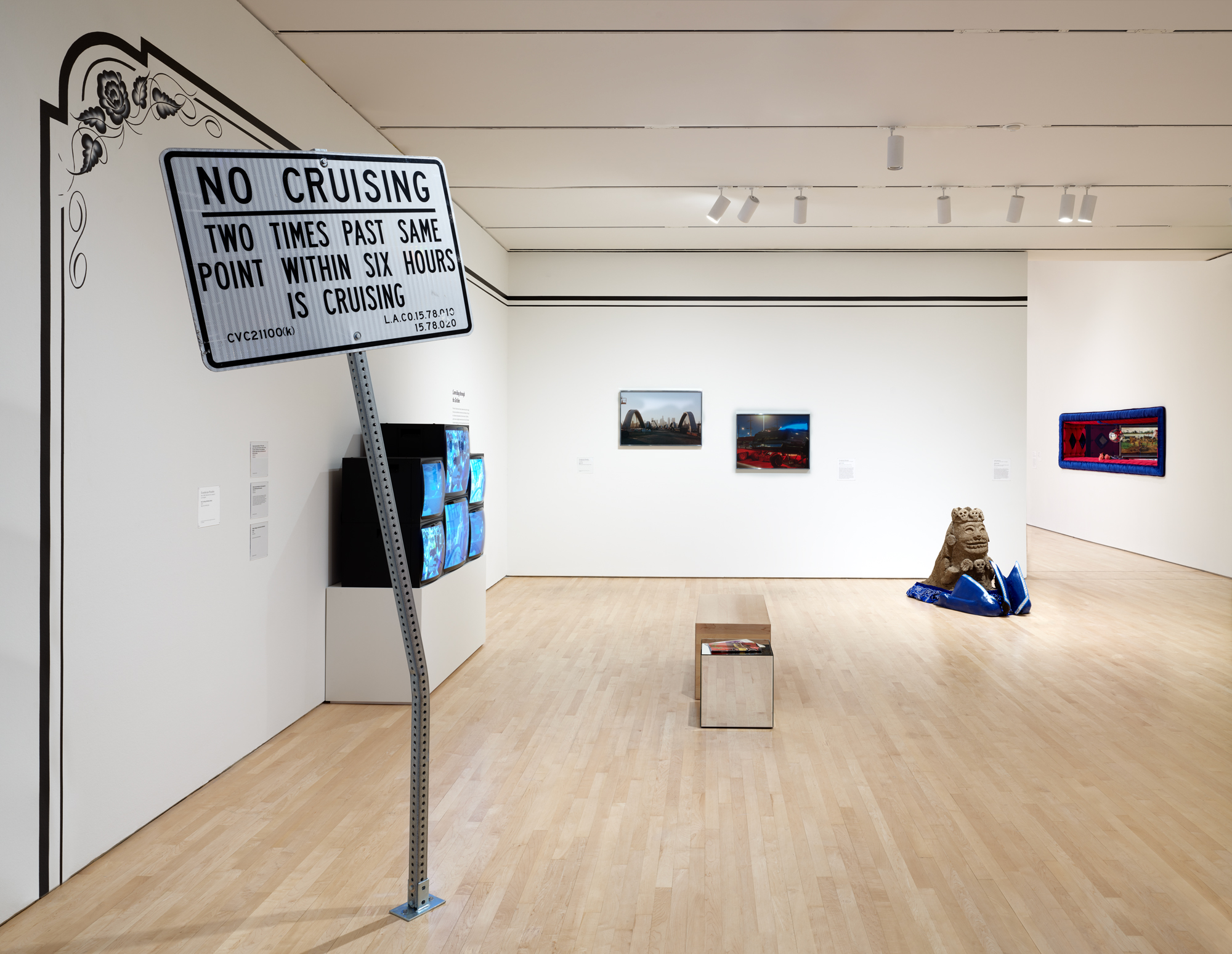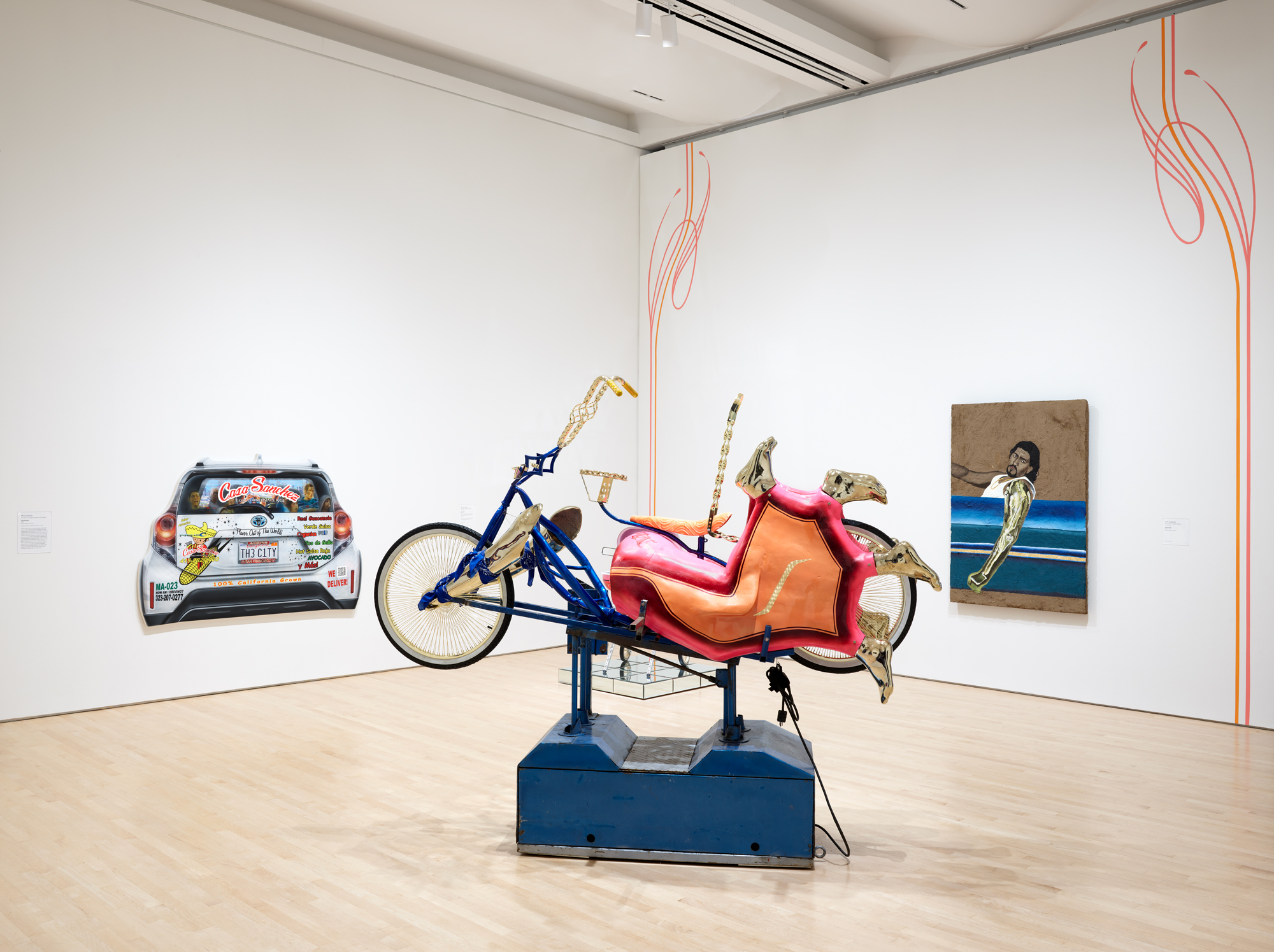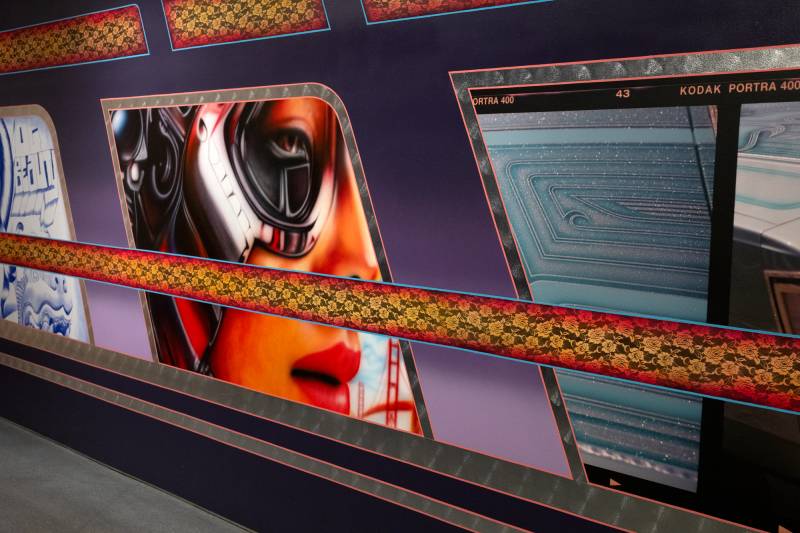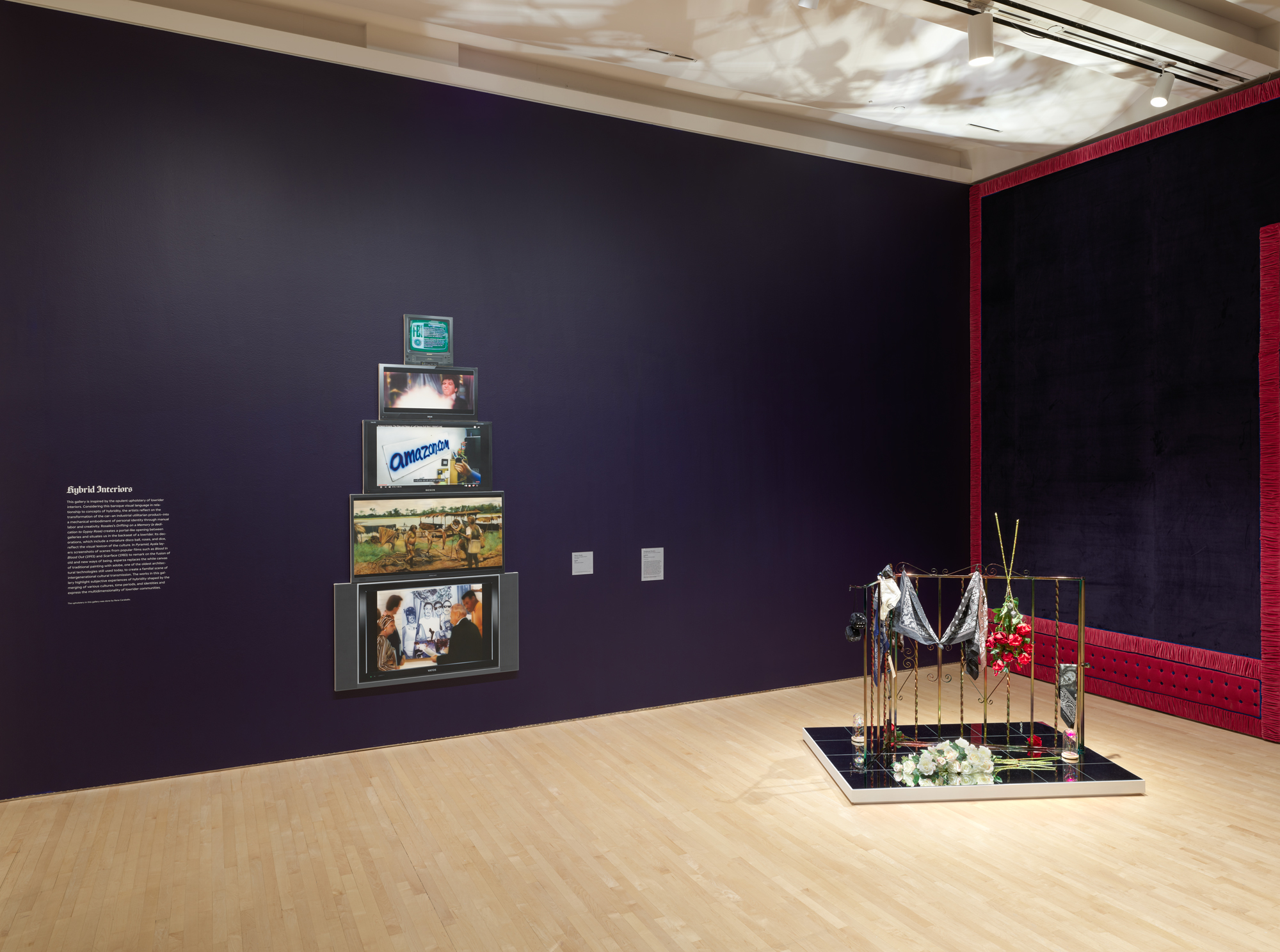It’s difficult to avoid punning when it comes to Sitting on Chrome, a highly polished three-person show at the San Francisco Museum of Modern Art. Works shine and sparkle — quite literally — in this wonderfully unrushed, materially evocative meditation on lowrider aesthetics and East Los Angeles history and culture.
The show, co-curated by Jovanna Venegas, Tomoko Kanamitsu and Maria Castro, brings together new and recent work by Los Angeles artists (and friends) Mario Ayala, rafa esparza and Guadalupe Rosales on the museum’s second floor. Continuing with the practice of keeping these galleries free (at least through the end of 2023), Sitting on Chrome welcomes visitors up from the Botta atrium with a frankly staggering display of decoration and finish.
On the show’s opening wall, imagery from all three artists (including an airbrushed cyborg mural from Ayala) is framed by custom pinstriping, faux silver leaf and lace stenciling courtesy of local sign painter and artist Lauren D’Amato. It’s museum wall as lowrider exterior, giving snippets of Ayala, esparza and Rosales’ distinct styles while framing them within a unified exhibition design, a preview of what’s to come in the four galleries that follow.

First we get a bit of background, courtesy of Ayala and Rosales’ own archives. In metal vitrines painted a shiny magenta, Ayala’s copies of Teen Angels and the San Francisco-based Mi Vida Loca open up to ads for Arik’s Workwear and hand-drawn illustrations, gesturing at the networks and communities that inform so much of the imagery we’re about to see. In the vitrine displaying Rosales’ Los Angeles Chicano Archive, a mirrored bottom cleverly allows viewers to see both the front and back of the ephemera displayed, including wallet-sized photographs with handwritten notes on their versos. Rosales has devoted much of her art practice to archiving, through the social media accounts @map_pointz and @veterana_and_rucas, Southern California women, music subcultures and community-created history.
If the first gallery is about context (a Whittier Boulevard “No Cruising” sign is planted at the entrance), the second is about bodies and machines. esparza’s Self Portrait, an acrylic painting on adobe, depicts the artist driving, his left arm hanging outside the car. But the arm’s metal, maybe chromed, just like the cast aluminum sleeves he created for Corpo RanfLA: Terra Cruiser, a mechanical pony ride turned performative sculpture that esaparza activates with the help of friends.

In a short documentary produced by the museum, esparza tours viewers through Elysian Park, long a gay cruising zone that’s now being overtaken by a disc golf course. His dual understanding of cruising informs the structure and decoration of Corpo RanfLA, a sculpture that allows him to become a lowrider, but also speaks to a more harmonious future with technology, one that’s less about dependency than agency and hybridity.




